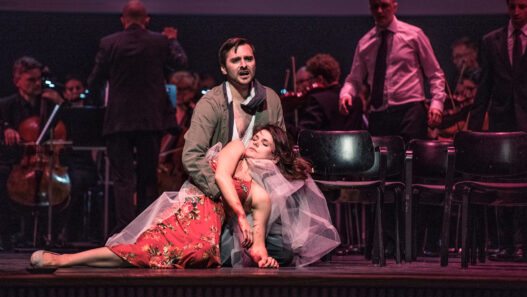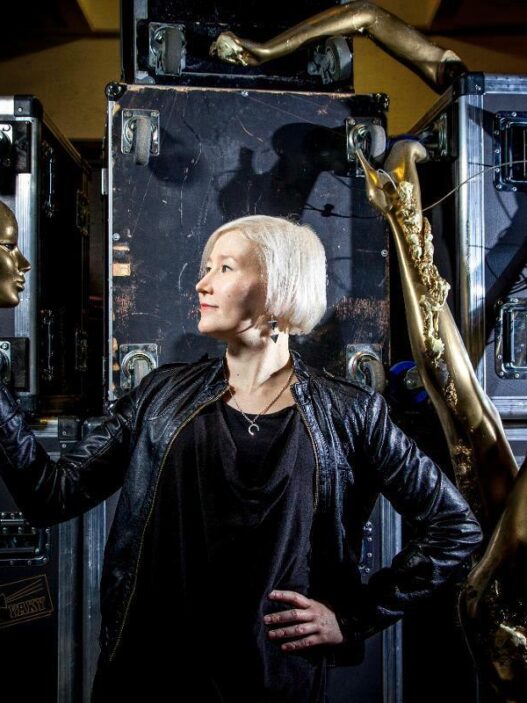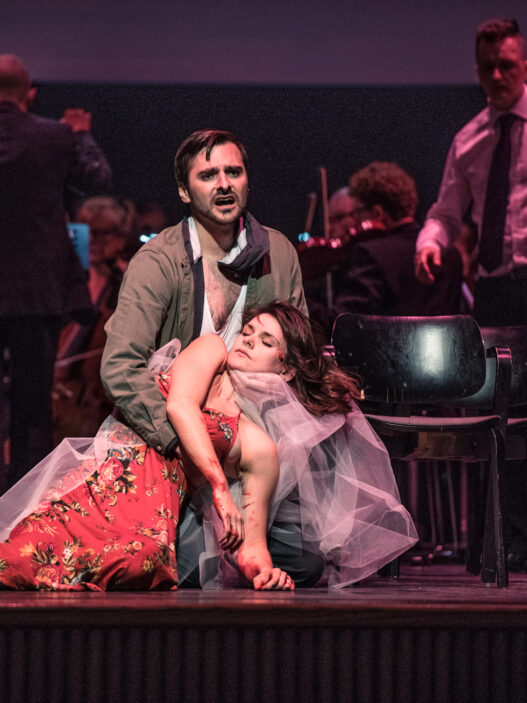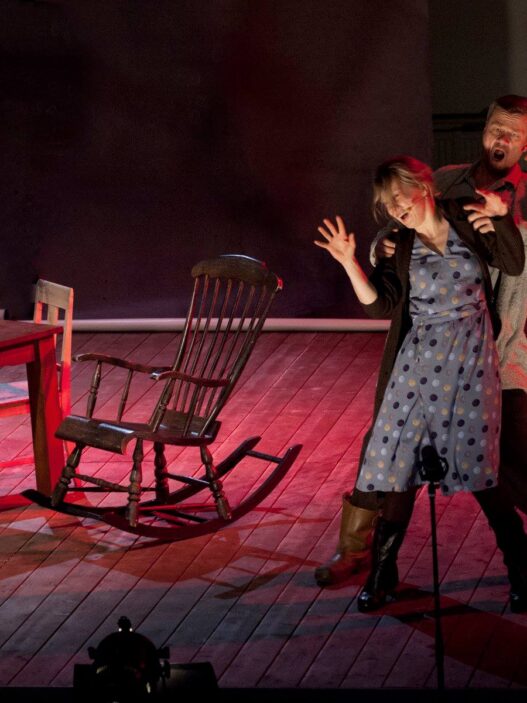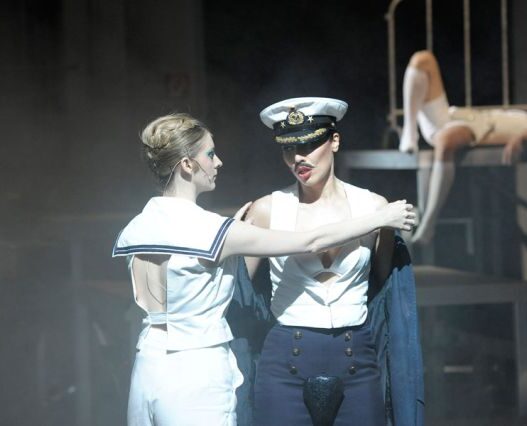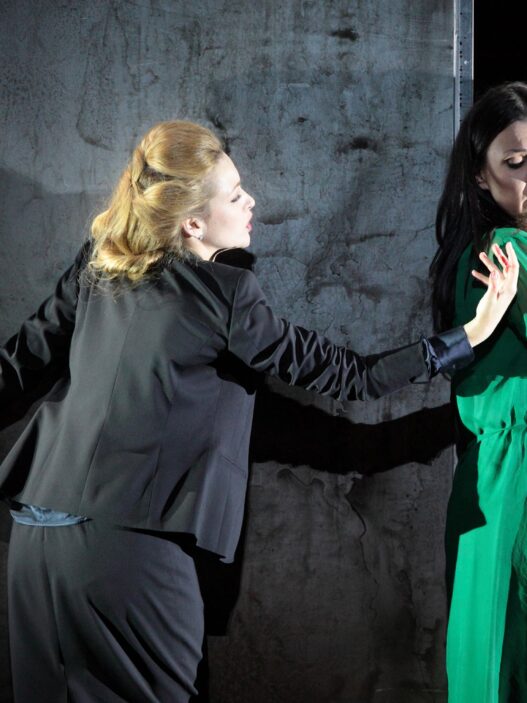This is the time of the year when opera houses worldwide publish their next season’s programs. Interesting at least, and inspiring at best, there is as much variation in programming as there are opera houses. Inspiring or not, what you can always find in the brightly colored, freshly presented season catalogues, are international co-productions.
International co-productions are nowadays integral to any modern opera house’s season planning and operations. While it is now considered an established way of producing opera, what do we mean by co-producing and what factors does a co-production contain?
A co-production usually consists of two to four opera houses or festivals collaborating on a specific work, which is then performed in all the collaborating partners’ opera houses, and/or festival stages. In this way, the opera houses ensure that the productions they show on their stages are of high artistic level and offer diverse diffusion and life span for this production.
On an artistic level, co-production and collaboration can be very inspiring and fruitful as they can become a melting pot for very different kinds of artists. The quality of the artistic concept should always be at the center, whether it is a new composition, innovative technology central to the piece, or a team of artists of interest and artistic relevance.
Usually, opera houses collaborate with other opera houses of similar size, and international co-production may look different compared to other performing arts, as they often are more influenced by process-based co-conception, especially in new drama, circus, etc., whereas opera as an art form has quite a strict lineage of old repertoire works, and newly commissioned operas often, even innovative in composition, are in the same strict form, with some exceptions, of course.
When we think of the value opera houses bring to society, we usually think of it in terms of the intrinsic value of art and other values deeply entwined in artistic value such as aesthetic, cultural, or historical value. Nevertheless, I propose we should also consider opera houses as service-oriented operators, as this allows us to better understand how opera houses can serve the different values important to the organization and its stakeholders, including the intrinsic value of art.
So, with this mindset, how international co-productions might bring forth artistic excellence?
Here are some key factors and values to keep in mind:
Artistic concept
The artistic concept and commitment to it should be the first reason to embark on international co-production. Usually, either the participation of a particular stage director and his/her/their team —nowadays still mostly his, but things are changing— or commissioning a piece from a composer, is the starting point of a co-production. The concept of high artistic quality sets the artistic demands and boundaries for co-production. The artistic value should be the key point of all the operations of a successful international co-production, just as it is for any production.
The opera houses also take part in —often but not always— the artistic process. In that case, they also share the artistic vision for the production and to some degree have creative control. This differs from a production made entirely by one opera house, or a rented production brought from opera house A to opera house B.
Also, the more renowned and high-quality co-production partner, the more merit or status is given to the whole co-production partner constellation.
Economical aspects
Co-production usually means that all the partners bear the financial burden. Dividing costs will be a part of the co-production format that should then include the negotiation on how the revenue in the future will be shared. Sometimes the production is divided into equal shares, but not always, as some partner usually acts as the main production partner. Essentially international co-production improves the profitability of the production and mitigates risks.
Collaboration
I see the fact that co-producing partners are usually from different countries that as kind of the point, as the intercultural dialogue is very enriching artistically and affects a lot the result. This gives huge possibilities to learn from each other artistically, technically, and production-wise.
Collaboration between opera houses, artistic partners and artists enables learning from each other, such as learning about work methods, cultures, skills development, and exchanging ways of creating. The diverse practice every opera house or co-producing partner has, gives the possibility for the team to enrich their way of working in the now and in the future.
Contracts
Most opera houses have their lawyers or a regular collaborating partner in juridical matters. At the core of co-productions are contracts which may sometimes come about through rather lengthy negotiations. To my surprise, not all opera houses use Letters of Intents, or pre-contracts which should in my point of view be at the core of smooth negotiations.
Usually, the contracts discuss co-ownership of the production, technical aspects, logistics, and administrative points, which are important to settle to inhibit any problems or confusion. A good contract helps everything else run smoothly, so it is worth the time and effort such .as Opera America’s co-pro Handbook.
Production
Production planning between opera houses is done years ahead, and even more so, when there are multiple co-producing partners onboard.
Nowadays, more modular sets that are easily transferable or recyclable are at least the goal of some opera houses. For example, Opera North just announced a completely green Autumn season in 2023, where all three productions are produced sustainably.
Also, video, and light design will play a bigger factor in the future compared to the older way of doing sets. Digitality in sets and extended reality (XR), and augmented reality (AR) technologies will have a huge impact in the future. What would co-productions be, when the whole set would travel on a single hard drive, and the digital hardware would be ubiquitous? Just imagine what kind of artistic possibilities it will bring.
Ecology
Ecological concerns can have a huge impact on the co-production process. When thinking and operating ecologically, there are different kinds of possibilities to focus on: such as sets and logistics. Do you decide to build traditional sets and ship them with trucks to all the co-production partners, or do you source the set locally, built in your opera house and demolished and recycled after? (Helsingin Koominen Ooppera has done productions this way, such as Halka in 2018, and Vixen in 2017, both co-productions).
If you plan to build a set and send it to the partners one by one, there is always the aspect of risk and tear and wear, and who should then fix it and where and how. Or should you make the sets in every house or build them as movable as possible?
Looking at contemporary research done in many different opera houses, theatres, and orchestras, bringing production to new audiences in another country is already far more sustainable in ecological terms than bringing those audiences to see it where it was originally staged.
Accessibility
International co-productions make the production much more accessible to new audiences, not to mention the possible streaming that has become important for many opera houses. Accessibility as a value should be considered one of the key factors in co-production.
Still, the different aspects of accessibility have an impact on the co-production’s whole performance run. Also, inclusion and accessibility mean different things to different co-producing partners. In some cases, it is the norm, while some partners might find it not as important as others.
Conclusion
Creating international partnerships through co-producing gives stronger resources and the possibility to work more efficiently—both economically and ecologically—international collaboration can strengthen the opera house’s artistic policy and bring a much wider audience and accessibility to their production. And as the most important point, it gives resources to create meaningful artistic experiences to audiences in diverse cities and opera houses.
Ecology and new digital tools will have a massive impact on co-productions in the future. All in all, there are certain hurdles to tackle in doing international co-production, but nothing unreasonable.
It´s time to take seriously the skills needed for co-productions, and get the benefits it can bring.
International co-production as an engine for artistic excellence










